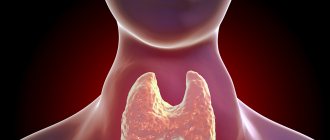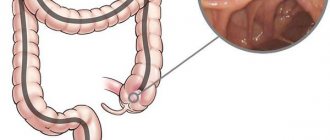Author Alexandra Balan-Senchuk
01/12/2020 19:09 (Updated: 06/02/2021 22:21)
Health » Obstetrics and gynecology » Mother and child
Galactosemia is a rare genetic disorder that causes the inability to digest galactose, which is a breakdown product of lactose.
Lactose is one of the main carbohydrates in milk
In the infant's intestines, this lactose is broken down into glucose and galactose, which are then used as a source of energy. Galactose is further converted to glucose through a series of enzymatic reactions.
One of the enzymes involved is galactose-1-phosphate uridyltransferase, and in galactosemia this enzyme is either defective or absent. When this happens, the infant is unable to convert galactose into glucose, which causes galactose to accumulate in the blood. This can lead to serious problems:
- liver enlargement,
- renal failure,
- brain damage
- cataract.
In the absence of adequate and timely treatment, this condition kills up to 75% of patients.
Since milk is the staple food for newborn babies, it is important to diagnose this condition as soon as possible to increase the baby's chances of survival.
Galactosemia affects approximately one child in every 60,000 children of European descent. The condition is caused by a mutation in the gene that codes for the enzyme.
What other types are there?
- Another variant of classic galactosemia (type I) is the Duarte form. This is a milder form; the activity of the GALT enzyme with this option can reach 25%, and sometimes higher. Severe life-threatening manifestations are usually not observed in newborns, but jaundice, liver enlargement and delayed physical development may occur.
- Type II. It is characterized by a mutation in the GALK1 gene, which encodes the enzyme galactokinase 1. Symptoms are not as severe as with classic galactosemia. Often the only manifestation of the disease is the development of cataracts.
- Type III. It is characterized by a mutation in the GALE gene, which encodes the enzyme epimerase. It can be mild or severe. The mild form is considered benign and is associated with enzyme deficiency only in circulating blood cells. In this case, there may be no clinical symptoms. In severe form, the enzyme is lacking in all tissues of the body. Symptoms are similar to classic galactosemia.
- Type IV. It is characterized by a mutation in the GALM gene, which encodes the enzyme galactose mutarotase. Of the 8 known affected children, none had gastrointestinal symptoms or severe liver dysfunction. Two had bilateral cataracts. All had normal growth and development.
Galactosemia is inherited in an autosomal recessive manner
This means that a child develops the disease only if he inherits an abnormal copy of the galactose-1-phosphate uridyl transferase gene from each of his parents.
Thus, each child born to carrier parents has a 50% chance of having a child with the condition, a 25% chance of developing the condition in the future, and a 25% chance of not eventually developing the condition and will never appear.
How common is galactosemia?
Classic galactosemia occurs in 1 out of 30,000-60,000 thousand newborns. Type II occurs in less than 1 in 100,000 cases. Type III is very rare. Type IV has been reported in 8 people worldwide.
Lactose intolerance: what is it and what are the reasons?
Clinical features of galactosemia
Most babies born with galactosemia initially have no symptoms, but develop jaundice, weakness, diarrhea and vomiting soon after the baby receives breast milk. The child cannot develop normally and is overweight.
Child
If the condition is not detected and treated early, children will eventually develop serious liver disease as well as brain damage. Of course, there is also a high risk of death.
Symptoms and treatment of galactosemia in children
Various metabolic disorders in childhood are observed quite often. One of them is galactosemia, a pathology in which carbohydrates from food are not absorbed. This is a hereditary disease, the cause of which is considered to be low production of a special enzyme that helps digest galactose. In Russia it is extremely rare.
Galactosemia is diagnosed immediately after the baby is born and begins breastfeeding. Symptoms include vomiting, diarrhea, bloating and flatulence. The child cries constantly and suffers from frequent colic. Often, newborn jaundice is added to other ailments.
Modern pediatrics quickly diagnoses galactosemia, but there are forms in which it is quite difficult to determine. Sometimes there are no severe symptoms of the disease, only milk intolerance with characteristic abdominal cramps is observed. Diarrhea and vomiting are possible. If galactosemia is not diagnosed in a timely manner, there is a risk of developing various complications, the main of which may be liver disease, for example, cirrhosis. There may also be problems with the ovaries in girls, sepsis and deterioration of vision, expressed in clouding of the lens. It is very important to start treatment on time and prevent such complications, which can lead to the most dire consequences.
Galactosemia is determined by the size of the liver - it is in an enlarged state. The child even outwardly looks lethargic and apathetic, there is decreased muscle tone, general weakness, and frequent convulsions. Over time, problems with the psyche and physical development of the baby arise. In all respects, he will lag behind his peers.
Today, testing for it is mandatory in some maternity hospitals. If detected in the early stages, the disease can be successfully treated. Often, if there is remission, the child and mother are sent home, but subject to strict adherence to the doctor’s recommendations. And first of all, a lactose-free diet is prescribed. The industry today produces enough infant formulas that do not contain this milk sugar.
If the baby grows and develops normally, there is a stable remission, doctors allow the patient with galactosemia to introduce complementary foods. But this should be done gradually, observing the body’s reaction to each new product. Typically, a strict lactose-free diet is prescribed until the child reaches 5 years of age. If galactosemia is severe, the production of enzymes does not improve, and you have to follow a diet for the rest of your life. Sometimes the child is prescribed special enzyme and other medications that improve the absorption of this carbohydrate. Future parents whose family has had such a hereditary disease should undergo a special examination in advance to identify a predisposition to it and the possibility of having a sick baby.
Genetic screening
It is best if you are planning children to check in advance whether you are an asymptomatic carrier of the disease.
Based on the results of the Genetic Atlas test, you can obtain not only data on the risk of developing certain diseases and carrier status of hereditary diseases, but also metabolic characteristics and a predisposition to intolerance to certain nutrients. Including finding out if you have any defects in galactose-related genes.
Description
The content of the article
Galactosemia refers to a number of congenital hereditary pathologies. This disease is quite rare in medical practice.
The development of pathology is associated with insufficient activity of enzymes necessary for the normal metabolic process that “process” galactose.
The clinical picture of galactosemia was first described in 1908 (although some date this fact only to 1917). Unfortunately, the experimental child was the one who suffered from exhaustion and an enlarged spleen and liver. It is stated that all these symptoms disappeared after the baby was taken off milk.
A more detailed description was made by Hermann Kelker; in 1956, it was he who pointed out the disturbance of galactose metabolism in newborns. After all, the first symptoms appear in the first three days after the birth of the baby.
Causes
The development of such a disease occurs only when both parents are carriers of the mutated gene (that is, of the autosomal recessive type). Moreover, each of the parents will still have mild problems in the absorption of galactose.
As is known, galactose enters the human body along with the food consumed, and glucose itself must be formed in the intestine as a result of the hydrolysis process of the disaccharide through the Leloir metabolic system.
But with insufficiency (deficiency) of important enzymes (GALK, GALT and GALE), galactose is not converted into glucose, but is concentrated in the bloodstream. As a consequence, intermediate metabolites of galactose become toxic substances.
It is worth noting that the gene of the second chromosome, located in the pericentromeric part and encoding the synthesis of galactose, is almost always affected.
Diagnostics
For early detection of galactosemia, doctors recommend that expectant mothers undergo prenatal testing to determine whether this disease has developed. For this purpose, it is better to take samples of villi and amniotic fluid.
After the baby is born, he will be required to be screened for galactosemia (capillary blood is drawn); most often, screening testing is carried out several times.
A more rare test is a child's urine test.
In any case, the test results will be sent to the pediatrician. Only he will decide whether to:
- consultations with a pediatric neurologist and ophthalmologist;
- related diagnostics for the child’s parents;
- prescribing an ultrasound of internal organs (to determine the extent of their damage);
- conducting an electroencephalogram;
- the need to prescribe eye biomicroscopy;
- performing a liver biopsy.
Signs
Due to the fact that the disease is considered genetic, its symptoms are determined solely by the clinical severity of the course.
The initial mild degree is manifested and characterized by:
- refusal of food;
- delayed speech development (or rather, expression of emotions in the voice);
- a lag in gaining the required body weight (anorexia is observed);
- liver damage from toxic substances (chronic liver diseases develop);
- damage to the central nervous system.
The moderate form of severity has the following symptoms:
- frequent vomiting;
- development of jaundice of varying degrees;
- anemia;
- delayed psychomotor development;
- development of cataracts;
- liver failure.
Severe galactosemia is indicated by:
- very early development (within two days after the baby is born);
- the appearance of vomiting in a baby soon after feeding with milk or formula;
- development of stool disorder (watery diarrhea appears);
- increasing degree of intoxication;
- general lethargy of the baby;
- refusal to eat (breast milk or bottle);
- lack of weight gain (severe anemia develops);
- intestinal colic;
- excessive flatulence;
- abundance of gases;
- persistent jaundice;
- decreased reflexes of the newborn;
- development of liver failure;
- cirrhosis of the liver;
- enlarged spleen;
- kidney damage;
- bilateral (in both eyes) cataracts;
- slowdown in physiological development.
In addition, there is a so-called asymptomatic (asymptomatic) type of Duarte galactosesia. It does not manifest itself in any way and can be detected solely by the results of a biochemical blood test.
Treatment
For the treatment of galactosemia in children, a specific dietary system is prescribed. Its main feature is the complete lifelong exclusion of all types of milk (they contain gadactose and lactose).
In addition, you will have to remove from your diet:
- all dairy products;
- bread;
- baking;
- sausages;
- margarine (and products containing it);
- candies;
- products of plant and animal origin;
- legumes;
- eggs;
- liver;
- kidneys
When the fact of galactosemia is established, the state must provide such children with special mixtures.
Parents should monitor their child’s constant consumption of berry juices, fruit and vegetable purees, rabbit, turkey, beef and chicken meat, fish, buckwheat and corn porridge.
ONLINE REGISTRATION at the DIANA clinic
You can sign up by calling the toll-free phone number 8-800-707-15-60 or filling out the contact form. In this case, we will contact you ourselves.
If you find an error, please select a piece of text and press Ctrl+Enter










